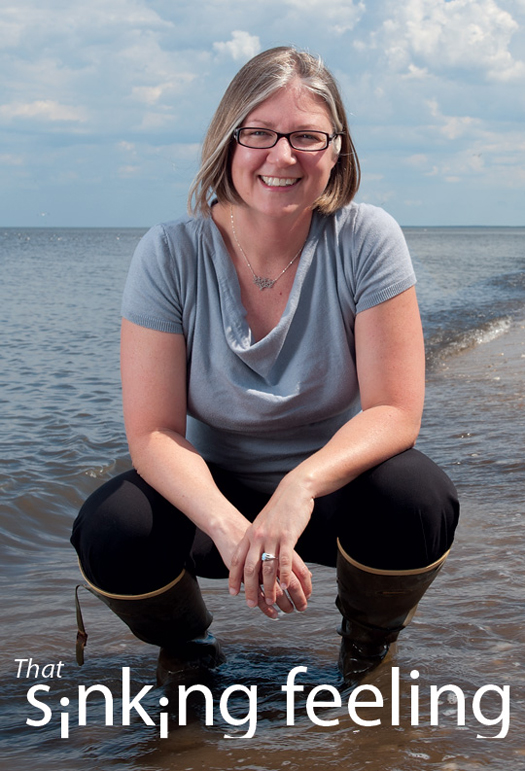
ALUMNI | Delaware is facing double geologic trouble, as the state's land area sinks while its sea levels rise.
In less than 100 years, the First State could see southern coastal towns and parts of northern cities drowned beneath the rising tides, says Susan Love, AG97, AS12M, who is on the front lines of the battle to help Delawareans become informed and prepared for such changes.
"Sea levels rise because when water gets warm, it expands, so as the oceans warm, they actually take up more space," says Love, a planner for the Delaware Coastal Programs in the state Department of Natural Resources and Environmental Control. "In addition, as a result of global climate change, land-based glaciers and ice sheets are melting, which adds water to the oceans."
Love is working with a committee of 25 agencies representing a diverse range of interest groups that has been meeting regularly since 2010 to assess Delaware's vulnerability to sea level rise and to make recommendations that will prepare the state for its effects.
She points to another problem facing the state as well: "Delaware is actually sinking as a result of the last ice age. It's called tectonic rebound, or isostatic rebound. Basically, the weight of a glacier that reached to Pennsylvania pushed downward on the land surface beneath it, and that land that was pushed down 20,000 years ago is now rebounding."
Like pushing on an exercise ball and then letting go, Love says, when one section rises back up it causes another part to be pushed down. The part now being pushed downward includes Delaware.
Right now, Love says, Delaware is sinking at about the same rate as its sea levels are climbing. Global sea levels are rising 1.7 millimeters a year, while Delaware's are rising about 3.3 millimeters, she says, with the 1.6-millimeter difference attributed to the geological sinking.
Love's goal is to increase awareness among state and local decision-makers and citizens about the threats of sea level rise in Delaware, ranging from increased flooding of homes and businesses to problems affecting sewage systems to a loss of wetlands and wildlife habitat.
"The problem is not that the sea is rising," Love says. "It's that we've established our society in the way."
Three scenarios have been created for planning purposes—with sea levels rising by 0.5, 1 and 1.5 meters by the end of this century. The scenarios were developed by a technical committee using information from national and international studies of sea level rise, as well as data from federally operated tide gauges in Delaware, at Lewes and Reedy Point. The Lewes Tide Station has operated since the 1920s, providing valuable historical tide data, Love says.
Possible preparations take three forms, she says. The first is retreating and letting nature take its course, hoping that nature will rebuild the land, which won't always happen. The second, called "accommodation," involves raising or modifying buildings in order to stay in the structures, changing personal behavior and avoiding building new structures in areas that are at risk. The third option is protection.
"It's what I call stay and fight," Love says. "The Dutch are very good at this. You build sea walls, you build dikes, you build structures, and you do beach replenishment projects. You do everything you can to keep the water out and stay in place."
In Delaware, Love says, all these options will have to be considered, with different areas having different priorities. Officials might invest in protection for the Port of Wilmington, for example, because of its economic importance, while some agricultural areas might be best served by letting nature take its course.
Whatever happens, Love wants to make sure that every Delawarean is aware of sea level rise and the challenges it presents. In her outreach efforts, she's encountered people who don't believe climate change is occurring and others who are very concerned about it and supportive of her work.
"We talked to all of them, and we put the information out and made sure that there are resources available to help agencies and individuals make informed decisions about responding to flooding of property, communities and infrastructure," she says.
Article by Adam Thomas





